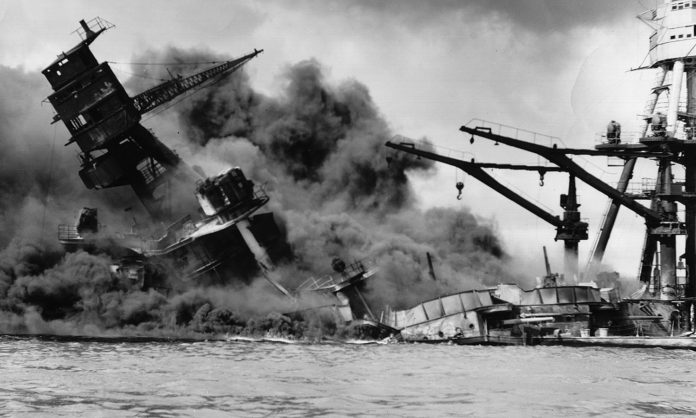Historical novels present a special challenge to writers, from the amount of research required to knowing which details are needed to create an immersive experience, from presenting outdated cultural mores to problem-solving without modern technology. Writers who create characters against the backdrop of well-known and significant historical events have signed on for an especially difficult job.
In an article for Writer’s Digest, Anna Stuart shares her top five tips for writing about big historical events in fiction while keeping your characters and their story front and center. In Stuart’s case, this challenge presented itself when she chose to write a story with the 1941 attack on Pearl Harbor as a setting. How could she make this well-trod territory her own?
“The answer presented itself early into my research when I came across the fascinating fact that the first person to see the Japanese planes arrive over Pearl Harbor was a female flight instructor by the name of Cornelia Fort,” Stuart says. “What I had found was a sideways route into Pearl Harbor—one that allowed me to show the tragic events from a perspective not usually considered by many.”
With Fort as a prototype heroine, Stuart developed her protagonist, a female pilot who ends up in Pearl Harbor in the months leading up to December 7. Eventually, the surprise attack became a smaller part of Stuart’s overall story. Stuart offers five lessons she learned from researching and writing this novel:
- Find your own angle on the event. “Your angle might come from an unusual fact you unearthed, or from a previously unexplored viewpoint,” Stuart says. “You might choose to create it by taking a sci-fi slant and adding in a time-traveler, or by playing with a virtual reality in which things turned out differently.”
- Carefully consider what real-life characters to include. “I preferred to give myself the license to create a strong emotional story of my own so went for fictional main characters,” Stuart writes. “The key was to work out the vital plot arcs of my fictional main characters and then to think carefully about which real people they could genuinely have come into contact with.”
- Find your micro-story within the larger historical story. “Consider the emotional pathways that you want to explore,” Stuart explains. “You’re not there to present your reader with an account of whatever big event you’ve chosen, but to tell your protagonists’ own story within that event.”
- Immerse your reader with description. “As with everything, story is the key so you should only show the place and the events as they dramatically impact upon your protagonist but, then, feel free to go for it!” Stuart says. “Remember the basic but very crucial advice to write with all the senses.”
- Consider how your event fits into a wider context. “It’s possible that you might choose to write a novel that takes place entirely within the course of your event, especially if it’s a protracted one, but it’s more likely that it will form part of a chain of wider events that either led up to it, or on from it, or both,” Stuart says. “Where you choose to position your event in your narrative will be crucially important and the way to establish that is to decide the impact it has on your protagonist.”












